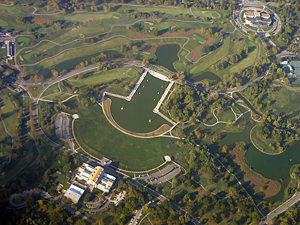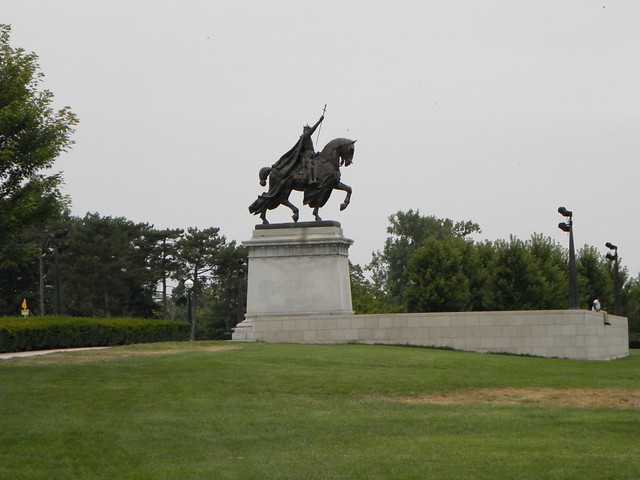Wednesday, March 20, 2013
Forest Park - St. Louis, MO
Forest Park in St. Louis is one America's classic city parks. It is of incredibly large size and was implemented before the turn of the twentieth century, just as the importance of public land and open space within urban areas was gaining traction. It opened in 1876, which makes it one of America's first large city parks. It also spans 1,371 acres, which gives it quite a presence within the boundaries of St. Louis. While providing the city with much needed open recreation space, the park is also a focal point of cultural life and is a prominent civic center for the St. Louis region. Furthermore, the park is an example of how open space and parkland can be revitalized much in the manner that cities can. Much like the city of St. Louis, Forest Park has seen both good times and bad. However, with consistent efforts at revitalization, the park is once again a source of civic pride and a destination for users of all types.
The park is the home to many notable St. Louis institutions. The St. Louis Zoo, the St. Louis Art Museum, the Missouri History Museum, and the St. Louis Science Center are among the top cultural destinations located within the park. Therefore, the park is just as important in that respect as opposed to a purely recreational and outdoor outlet. As such, the park is an attraction that draws year-round traffic, a fact that many parks in similar climates cannot share as they lack the cultural amenities that draw people indoors during colder months. The park's incredible size allows for these institutions to be comfortably located within it. One of the main reasons for the park's large size was the fact that in the 1870s, the location of the park was on the undeveloped western edge of the city, and it was surrounded by largely rural land. Currently, the park has a much more urban feel as it has become completely surrounded by development. The early preservation of the land has contributed to the quality of life on the western side of the city as well as increasing nearby property values. A main selling point in the area surrounding the park is the park itself an amenity. This is not unusual and is a running theme across nearly every major city in regards to proximity to a well-designed park.
The park quickly established itself as a place for internationally significant events, which reflected the importance of St. Louis in the early twentieth century. In 1904, the city hosted both the World's Fair along with the Olympics, which was third in the modern era and the first in the United States. The park played a key role in hosting both events. The park was the main centerpiece of the World's Fair and quite an effort was made to enhance the park. In all, over 900 structures were built throughout the park and its design was consistent with City Beautiful movement of the era which emphasized the importance of grand public space and physical beauty in improving quality of urban life. After the fair established the significance of the park, investment in its success continued throughout the ensuing decades and many new structures were added. As the city grew in prominence and size, the park grew accordingly along with it. Monuments and grand landscapes were constructed throughout the park in an effort to showcase the park as the open space centerpiece of the city.
However, as with many cities across the United States in the second half of the twentieth century, St. Louis experienced a significant population and economic decline. As such, many city services experienced a cutback including Forest Park funding and service activities. The park became fragmented into several parts of different priorities and even ownerships. In response, park advocates and the city combined to produce a master plan to reconnect and unite the park as a whole. Over $100 million have been invested in the restoration of park facilities through a public-private partnership. The master plan process sought guidance from the community in developing goals from which the new park priorities would be established. As a result, Forest Park might be more popular than ever, even if St. Louis is not the city it was at one point in time. It is the prime focus of recreation and indoor and outdoor cultural events for not only the city but also the wider region. And it still exists sue to a concerted effort to not only maintain but extend its importance within the urban fabric.
Subscribe to:
Post Comments (Atom)



No comments:
Post a Comment